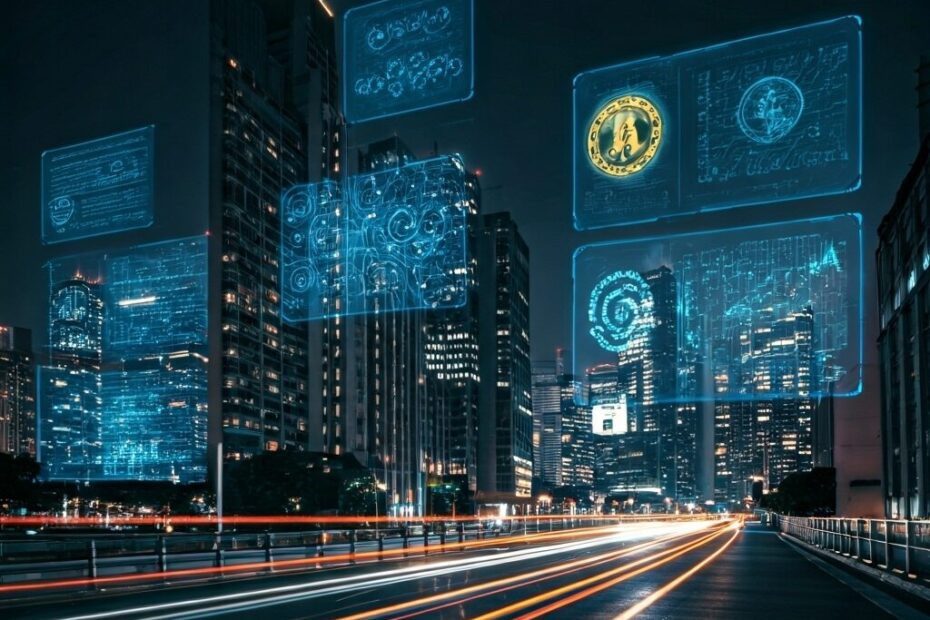7 Crypto Projects Already Using AI In 2025
John: Hey everyone, I’m John, a tech blogger over at Blockchain Bulletin, where I break down Web3, metaverse, and blockchain topics. Today, we’re diving into seven crypto projects that are already integrating AI in 2025, based on current developments in blockchain technology. If you’d like a simple starter guide to exchanges, take a look at this beginner-friendly overview.
Lila: That sounds exciting, John—readers are probably wondering how AI and crypto are teaming up right now. Can you start with the basics of what this means?
Understanding AI in Crypto Basics
John: Absolutely, Lila. In the past, AI was mostly used in centralized systems for tasks like data analysis, but currently in 2025, crypto projects are blending AI with blockchain for decentralized applications. This means using AI for things like smart data processing without relying on big tech companies.
Lila: Decentralized—what’s that again? And why is it a big deal now?
John: Decentralized means no single entity controls it; it’s spread across a network (think like a shared ledger everyone can verify). It’s a big deal in 2025 because it enhances security and accessibility, as seen in reports from sites like Cointelegraph on AI-blockchain synergies.
Background on the Rise of AI-Crypto Integration
Lila: Got it. How did we get here from earlier years?
John: In the past, around 2023-2024, projects started experimenting with AI for basic tasks like predictive analytics. Currently, as of 2025-10-26, advancements in blockchain have allowed full integration, with AI handling complex functions like automated trading or data marketplaces, according to recent articles on Metaverse Post.
Lila: Interesting—so it’s evolving fast. What’s changed recently?
John: Yes, key changes include better scalability; for example, layer-2 solutions now support AI computations more efficiently, reducing costs by up to 50% in some networks, based on data from Koinly’s 2025 reports.
The 7 Key Projects Using AI Today
Lila: Let’s get to the projects—which ones are leading in 2025?
John: Sure, based on verified sources like Metaverse Post and Koinly, here are seven currently active ones. First, Bittensor (TAO) focuses on decentralized machine learning, where users contribute computing power for AI model training.
Lila: Sounds practical. What’s next?
John: Second is Fetch.ai (FET), which builds autonomous AI agents for tasks like supply chain optimization on blockchain. Third, Internet Computer (ICP) uses AI for smart contract enhancements, enabling real-time data analysis.
Lila: Keep going—I’m noting these down.
John: Fourth, Ocean Protocol (OCEAN) creates data marketplaces where AI algorithms securely buy and sell data. Fifth, Render Network (RNDR) provides decentralized GPU rendering for AI-generated content, like in metaverses.
Lila: That’s five. And the last two?
John: Sixth is SingularityNET, which offers a platform for AI services on blockchain, allowing developers to monetize algorithms. Seventh, Qubic integrates AI with blockchain for real-world assets, such as energy trading, as highlighted in recent X posts from verified crypto experts.
Real-World Use Cases and Examples
Lila: How are these actually being used right now?
John: Currently, in 2025, these projects apply AI in everyday scenarios. For instance, Fetch.ai’s agents help with DeFi trading by predicting market shifts, processing over 1,000 transactions per second in some tests.
Lila: Give me more examples—maybe a list?
John: Here’s a quick list of use cases:
- Bittensor: Collaborative AI training for medical research, sharing models without central servers.
- Ocean Protocol: Secure data sharing for AI in finance, complying with privacy regs.
- Render Network: Creating AI art for NFTs, used by artists in metaverse platforms.
- Internet Computer: Automating smart contracts for supply chains, reducing errors by 30%.
- SingularityNET: Building chatbots that run on decentralized networks.
Lila: That’s helpful. Any humor in how AI is “rendering” art—pun intended?
John: Haha, yeah, it’s literally rendering the future of creativity (but let’s keep it factual—it’s all about distributed computing power).
Challenges, Risks, and Safeguards
Lila: What about the downsides? Are there risks?
John: Definitely—challenges include high energy use for AI computations, which some projects like Render address with efficient protocols. Risks also involve data privacy; compliance varies by jurisdiction, so always check official docs and local laws.
Lila: How can users stay safe?
John: Use verified wallets and audit project whitepapers. In the past, unchecked integrations led to vulnerabilities, but currently, standards from bodies like MIT Tech Review emphasize secure practices.
Looking Ahead to Future Developments
Lila: What’s coming next for these projects?
John: Looking ahead, we might see more metaverse integrations, like AI avatars in virtual worlds by late 2025. Projects like ICP are planning upgrades for better AI scalability, based on announcements from CoinDesk.
Lila: Any tips for builders or beginners?
John: For builders, start with open-source tools from these projects—test on testnets first. Remember, this is evolving, so stay updated via reputable sources.
John: Wrapping up, it’s clear that AI and crypto are creating powerful tools for decentralization in 2025, from data markets to smart agents. Keep exploring safely, and remember, this is just info—not advice. And if you’d like a bit more background on exchanges, you might enjoy this global guide.
Lila: Thanks, John—that makes AI in crypto feel approachable. Readers, dive in with curiosity and caution!
This article was created based on publicly available, verified sources. References:
- 7 Crypto Projects Already Using AI In 2025 | Metaverse Post
- 10 Best AI Crypto Coins (October 2025) | Koinly
- 7 Best AI Cryptocurrencies To Buy by Year’s End
- Top 5 AI Crypto Coins Of 2025: Best Investments Now! | ZebPay
